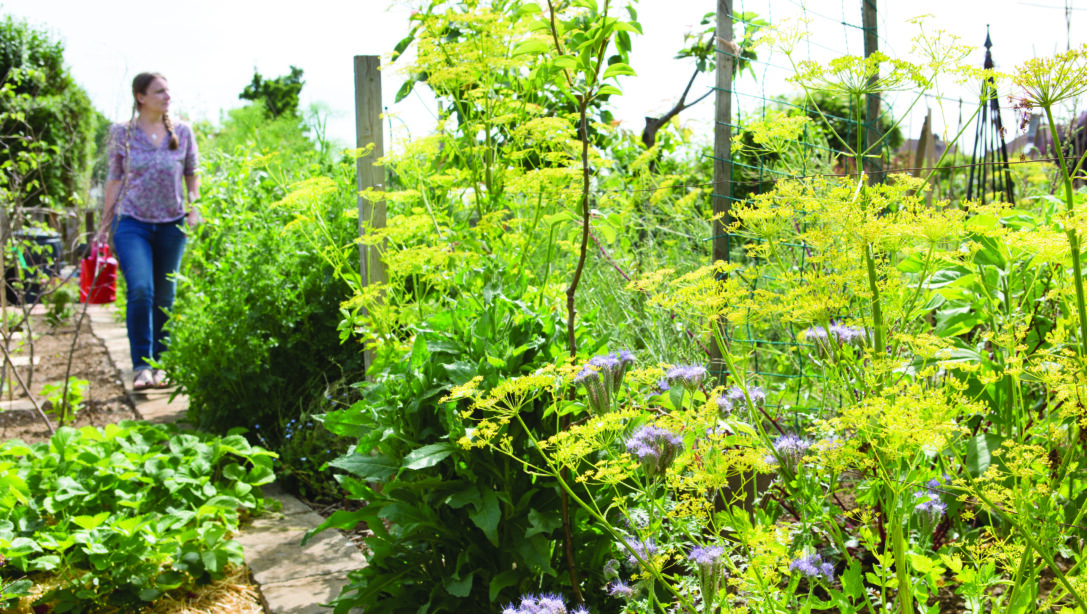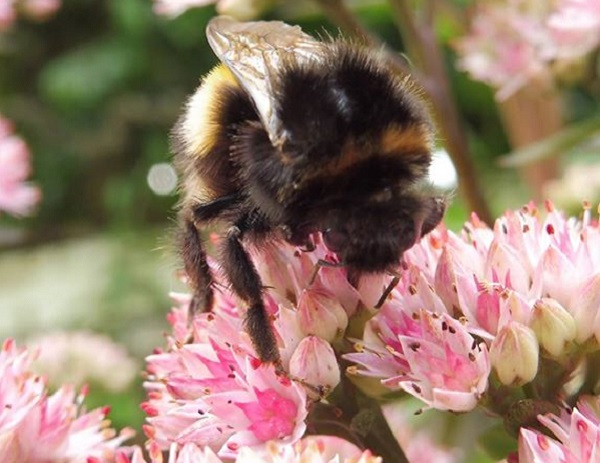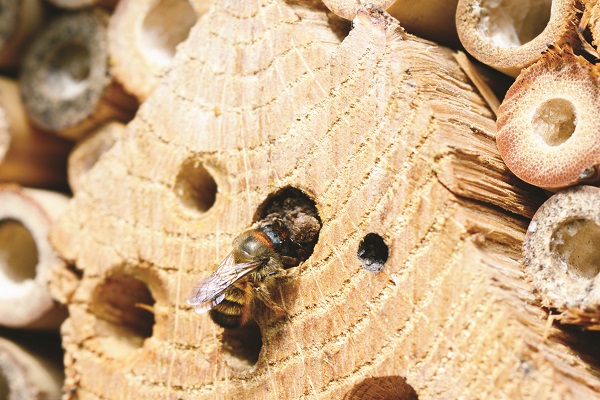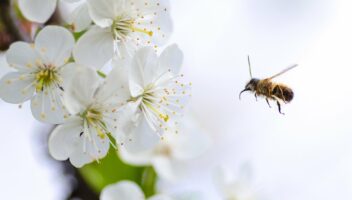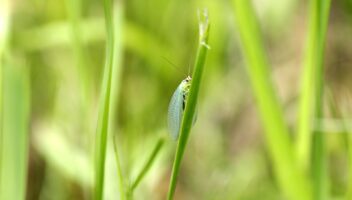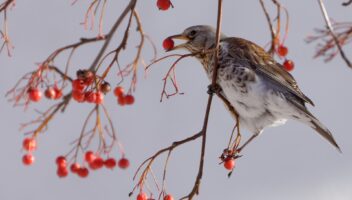Award-winning garden writer, TV and radio presenter and wildlife specialist Kate Bradbury has a deep and longrooted love for wildlife. She shares what gardening for wildlife means to her and how we can all do our bit in our own gardens to help.
Our wildlife is disappearing. The most recent State of Nature report, published in October 2019, paints a bleak picture: 41 per cent of wild species continue to decline, with butterflies and moths, hedgehogs and toads some of the hardest hit. Most declines are due to a loss of habitat such as hedges, ponds and wildflower meadows, but climate change, pollution and pesticides all play their part in the continuing demise of some of our most treasured species.
There’s a network of nature reserves across the country, designed to protect wildlife. Sadly, there are too few of them to make a difference to some species. But what if we all managed our gardens more like nature reserves? What if we rewilded them, just a little, to let nature back in? Our gardens take up more space than all of our nature reserves, after all. What picture could be painted then? What could the state of nature then be?
For me, gardening for wildlife is just gardening. I grow flowers for bees because I like bees. I create habitats for hedgehogs and birds because I want hedgehogs and birds to nest with me. I don’t want to have a garden without noisy buzzing borders, the sound of frogs in the pond, the sight of slow worms curled together beneath my ‘reptile tin’. I love gardening and I love wildlife. So, I want to encourage as much wildlife into my garden as possible.
Wildlife gardening fills me with love and hope, and it’s fun! But, apart from that, it’s becoming increasingly important in the fight against biodiversity loss. We might not be able to protect freshwater salmon, curlews, heathland butterflies or natterjack toads in our gardens. But we can help many other species –starting with the birds, hedgehogs, frogs and butterflies you may already have coming in.
There’s so much we gardeners can do for wildlife. Even those of us with tiny courtyards or balconies can do our bit. And, while your space might not provide the complete habitat some species need to breed, it may provide the food – and therefore energy – they need to find that new mate or place to build a nest.
I’ve compiled a list of 10 things you can do for wildlife right now, outside your back door. Don’t feel obliged to do all of them. But, the more you do, the better for wildlife.
10 Things to Do in Your Garden to Support Wildlife
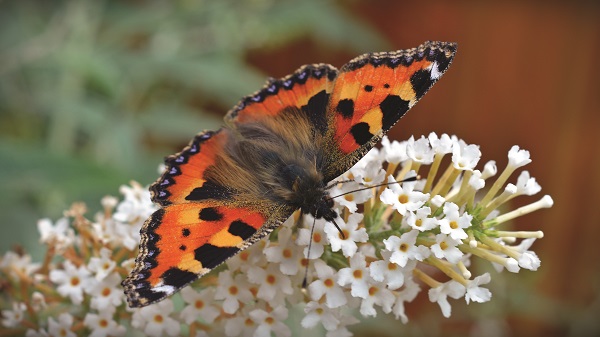
A tortoiseshell butterfly
Let Grass Grow Long
Several moths and butterflies breed in long grass. A small patch will do – mow in spring and leave it long through winter so hibernating caterpillars and pupae can shelter safely. Mice, hedgehogs, grasshoppers and amphibians may use it too.
A pond will attract birds and amphibians, along with insects such as dragonflies and damselflies. Ensure it has a shallow area so mammals can walk in and out. Tadpoles will congregate here, too.
Grow Native Plants
Butterflies and moths are fussy about which plants they lay eggs on. Some of our most colourful butterflies breed on nettles, while moths choose native shrubs and trees such as hawthorn, hazel and birch, and ‘weeds’ like red clover, dock and dandelion.
Be Less Tidy
Few gardeners want to hear this, but messy gardens really are better for wildlife. You don’t need to let your whole garden go, simply let leaves pile up in a corner, avoid deadheading flowers and leave borders intact over winter for hibernating insects.
Make Habitat Piles
Habitat piles from logs, leaves, plant debris and even stones make fantastic wildlife habitats. Make a feature of them in a prominent place or tuck them at the back of your borders where you can’t see them.
Open Up Your Garden
You may see your garden as your private space within four fences or walls, but wildlife sees it as part of a much wider habitat. Ensure mammals, reptiles and amphibians can get in by digging holes beneath your fence or removing a brick out of your wall.
Grow Bee-Friendly Flowers
Grow a wide variety of flowers – of different shapes – from March to November. Try crocus in spring, lavender, salvia, poppies, and cranesbills in summer, and autumn-flowering Verbena bonariensis and rudbeckias.
Erect Bird Boxes
Bird boxes will be used by a variety of species. Fix tit boxes between 2-4m high to a wall or fence with a clear flight path to the box. Sparrow and swift boxes should be higher, typically in the eaves of the house.
Put Up a Bee Hotel
Buy a tailor-made box or make your own using bamboo canes. Fix it to a wall or fence at head height, in full sun. Take it down in autumn and store it somewhere cool and dry, like your shed.
Compost
Remember when compost heaps used to be a heap of garden waste in the corner? These days we tend to compost in closed bins, which are like a closed shop to wildlife. Bring back the pile of garden clippings and let wildlife feast on the invertebrates it attracts.
Kate Bradbury Biography
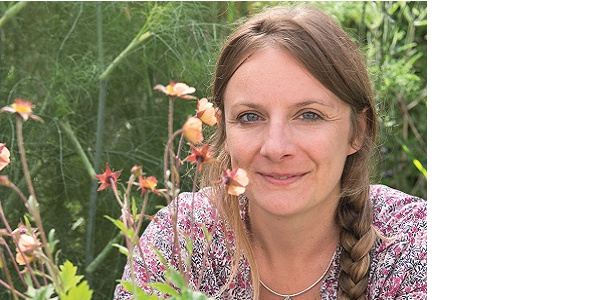
Kate Bradbury is an award-winning author and journalist, specialising in wildlife gardening. She edits the wildlife pages of BBC Gardeners World Magazine and regularly writes articles for the Daily and Sunday Telegraph, The Guardian, RHS magazine The Garden and BBC Wildlife and BBC Countryfile magazines. She is patron for wildlife charities Froglife and Bumblebee Conservation Trust, and is an Ambassador for Butterfly Conservation.
In 2019, she transformed her garden, which was filmed for BBC Springwatch, Gardeners’ World and Autumnwatch. She lives in Brighton.


